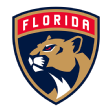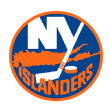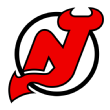Welcome to 2019 NHL free agency. We'll be grading the most notable offseason signings below, so come back for updates as deals are completed.
Jump ahead to a signing:
Panarin to NYR | Duchene to NSH | Johansson to BUF
Aho to CAR | Dzingel to CAR | Tanev to PIT | Donskoi to COL
Bobrovsky to FLA | Lee to NYI | Perry to DAL | Smith to EDM
Nyquist to CBJ | Talbot to CGY | Zuccarello to MIN
Connolly to FLA | Myers to VAN | Pavelski to DAL
Ferland to VAN | Simmonds to NJ | Lehner to CHI
Mrazek to CAR | Varlamov to NYI

Artemi Panarin, 27, LW, New York Rangers
The terms: Seven years, $11.6 million AAV
Where does he fit?
He's the marquee player for the Rangers to market and build around. He's the player who makes Rangers fans believe that they might be able to win a Stanley Cup before Henrik Lundqvist's tenure is over. He's also the highest-paid winger in the league.
Panarin will slide onto the first line with Mika Zibanejad as his center. Fellow Russian Pavel Buchnevich or No. 2 overall pick in the draft Kaapo Kakko should get cracks to play at the opposite wing. Zibanejad (under contract through 2021-22) is only 26 years old. Kakko is 18 and Buchnevich (an RFA this summer) is 24. These are all players whom New York believes in and plans to keep around for some time, meaning the group can develop together.
The Rangers are transitioning this season from their rebuild -- which, for all intents and purposes, went better and quicker than expected -- to contending status yet again. Yes, it's very on-brand for the Rangers to be enticed by the splashiest free-agent name on the market and shell out big money.
But Panarin earned it: Since entering the NHL in 2015 with the Chicago Blackhawks, he ranks fifth in 5-on-5 points and fourth in 5-on-5 primary points. The Rangers earned the right to make this signing, too, for rebuilding the right way. They're back at it, and ready to push again for their first Cup in 26 years.
Does it make sense?
The only thing that's befuddling is how the Rangers were able to stay so disciplined to their rebuilding plan, and transition out of it so quickly. This should be the model for all teams who need to retool, and how to do it in the shortest window possible. It was only February 2018 when the Rangers sent out the now-infamous letter to fans announcing what was supposed to be a long, painful rebuild in which they would part with many familiar faces.
Seventeen months later, they're poised to win yet again. They signed the most coveted free-agent forward on the market in Panarin, and signed him through his prime years. They acquired a new No. 1 defenseman in Jacob Trouba. They acquired a potential top-four defenseman in Adam Fox. They drafted a generational scoring talent in Kakko. The future is no longer bleak.
It makes a ton of sense for Panarin, too. Though we once believed he wanted to be linked with former Columbus teammate Sergei Bobrovsky as a package deal, the truth is, he has his own goals. Panarin didn't want to stay in Columbus long-term because he wasn't crazy about the market. He doesn't shy from the bright lights, and he left some money on the table, because Madison Square Garden's lights shine the brightest.
Overall grade: A
James Dolan's two sports teams have completely opposite narratives now. Less than 24 hours after Dolan was ridiculed in NBA circles for whiffing on the pursuit of Kevin Durant, not believing he was worthy of taking a risk on coming off his Achilles tendon injury, the Rangers sneaked in and stole Panarin away from the local rival Islanders, and suddenly are the toast of the NHL.
-- Kaplan

Matt Duchene, 28, C, Nashville Predators
The terms: Seven years, $8 million AAV
Where does he fit in?
As the Predators' No. 2 center. We don't see the Preds breaking up their dynamic top line -- centered by Ryan Johansen -- anytime soon, though Duchene is a nice complement to round out the top six. Nashville hasn't been thrilled with their current second-line center, Kyle Turris, ever since he came over via the splashy November 2017 three-way trade with Ottawa and Colorado (which, coincidentally, also involved Duchene). Stylistically, Turris isn't the best fit in the Predators' system and hasn't produced as expected; he was at 0.42 points per game in 55 games last season.
Yes, Nashville's trio of centers are now very expensive (with Johansen making $8 million annually, Duchene at $8 million and Turris at $6 million) but so it goes for a team desperate to create more offense. The Predators have fluttered out of the playoffs in back-to-back years because of a lack of secondary production.
Duchene's arrival also makes it possible that either Turris or Nick Bonino are eventually moved. After all, if Predators GM David Poile has a reputation in the league, it's as a transaction-happy GM. If Nashville can't find a taker for Turris -- at $6 million for the next five years, it's going to be tough -- the team may try to put him at Duchene's wing. In Duchene's career with Colorado, Ottawa and Columbus, his production has often been reliant on chemistry with linemates. That's the crucial next step for Nashville: finding the right guys to play next to Duchene. Craig Smith and Mikael Granlund may get the first crack at being Duchene's linemates, but after that, there's a big drop-off in forward talent.
Does the deal make sense?
It makes so much sense that it was projected months ago, including when amateur sleuths found out that Duchene had purchased "investment" property in Nashville and reiterated the fact that Duchene enjoys country music. The signing ultimately became inevitable at the draft, when Poile made the shocking move to trade P.K. Subban. Yes, the Predators have a surplus of capable defensemen, which is why you can justify trading a former Norris Trophy winner who is still near his prime. However, Subban's departure was all about clearing cap space, as he made $9 million per year, all of which was absorbed by the Devils.
The Predators wanted to use that money on high-skilled forwards who could generate more offense. Duchene has the skill, and -- as a player who typically has a high shooting percentage -- can be a finisher. He's coming off a career-high 31 goals last season, and can be a boost for Nashville's power play, which was dreadful last season.
Overall grade: A-
Of course, when you see the term and the overall money, it looks like Nashville overpaid (and they probably did). But that's the price for business these days. The Predators needed to shake up their roster and improve their forward corps after another playoff flameout, and they landed the top available center on the market. It's an arm's race in the West, and the Predators proved they're still very much in it.
-- Kaplan

Sebastian Aho, 21, C, Carolina Hurricanes
The terms: Five years, $8.45 million AAV
Where does he fit in?
As the team's No. 1 center, just where he was last season. Matching Montreal's offer sheet was a no-brainer for the Hurricanes. Aho's stellar 2018-19 campaign coincided with the team's breakout season. Top centers aren't exactly easy (or cheap) to acquire, and Aho, Carolina's top offensive producer last season, has proved he can be just that.
He'll be flanked by countryman Teuvo Teravainen (a reasonable $5.4 million cap hit through 2023-24) for the foreseeable future, and likely Andrei Svechnikov (still on his rookie contract for the next two seasons) on the other wing. The trio can grow together as the Canes try to prove that last season was no fluke and that they can be a legitimate playoff contender for years to come.
With a cap hit of $8.45 million, Aho has the 12th-highest cap hit among centers in the league, which feels about right for a 21-year-old who has yet to reach his full potential (he has upped his point totals from 49 as a rookie to 65 in 2017-18 to 83 last season). Canes GM Don Waddell said he was surprised Montreal's offer sheet did not have a higher AAV attached. Aho could have commanded it.
Does the deal make sense?
The Canes said they had no intention of letting Aho get away this offseason, and Waddell put it best in his initial comments following Montreal's offer sheet: This made the GM's summer a whole lot easier. Waddell won't have to spend the next few months negotiating with Aho's agent (contract talks were initially far apart). While the typically low-spending Canes are happy the AAV wasn't for more, they're not exactly happy about the term. A five-year deal walks Aho right into free agency. The team would have preferred a longer deal to lock in Aho.
That said, once it was apparent that owner Tom Dundon had no problem paying the front-loaded contract (it includes $21 million in bonuses to be paid in the first 12 months), there wasn't much hesitation. The low AAV might affect other RFA negotiations, such as those of Mitch Marner, Brayden Point, Mikko Rantanen, Patrik Laine, who would like more but now can't use Aho as comparison -- but that's not the Canes' problem.
Overall grade: B
The team keeps the player it wants at a price that feels right (if a bit of a bargain), though the contract length isn't ideal.
-- Kaplan

Ryan Dzingel, 27, C/W, Carolina Hurricanes
The terms: Two years, $3.38 million AAV
Where does he fit in?
He could fit as the new Micheal Ferland. We don't mean in comportment, as Dzingel lacks the truculence of the now-Canucks winger. But he will play in the Hurricanes' top nine, and, as with Ferland, that could be a spot on the third line or a chance to skate with the higher-end offensive talent on the roster. Dzingel has broken 20 goals in each of the past two seasons.
"His speed, skill and vision make him an excellent fit for our forward group and our style of play," said GM Don Waddell. "At 27, he's just entering his prime and certainly had options coming off a 26-goal season, so we're happy he's chosen to be a part of the Carolina Hurricanes."
His possession numbers are less than desirable, having been on the negative side of shot attempts relative to his teammates in the past two seasons. Part of that is on him; he doesn't shoot the puck enough at 5-on-5. It's logical, then, that a move to the Hurricanes and coach Rod Brind'Amour will be beneficial, as Carolina was third in the NHL last season in shots on goal at 5-on-5 (2,232).
Does the deal make sense?
At $3.38 million AAV for two seasons, it does. Again, not to harp on Ferland, but he just got four years and $3.5 million AAV from Vancouver. He had a better season than Dzingel, and may very well be a better player. But Dzingel isn't chopped liver, and even if he were, it's two years versus having to go four to retain Ferland.
What the Hurricanes are hoping for here is that they're buying low on a player whose stock took a hit after that trade to Columbus. He had 12 points in 21 games for the Blue Jackets, but his average ice time dropped by nearly 3:30 after the deal. Simply put, he never got his shot under John Tortorella, and by the time the playoffs rolled around, you could see the impact that had on him, with one goal in nine games and a scratch during the Boston series.
Meanwhile, Brind'Amour has quickly earned the reputation as a guy players want to play for. What could drive a guy who went to Ohio State not to re-up with the Blue Jackets? There's your answer.
Overall grade: A-
Dzingel is versatile and comes with a good two-year term as a replacement for Ferland in this Hurricanes lineup.
-- Wyshynski

Marcus Johansson, 28, LW/C/RW, Buffalo Sabres
The terms: 2 years, $4.5 million AAV
Where does he fit in?
Anywhere, really. The player formerly known as "MoJo" -- thanks to his stint in Boston, he is heretofore known as "JoJo" -- can play every forward position, but he's at his best on the wing. Johansson had 30 points in 58 games between the Devils and Bruins last season before having a strong postseason stint with Boston in a depth role, scoring 11 points in 22 games.
Johansson has basically done it all, outside of being an effective penalty killer. He has ridden shotgun with the likes of Alex Ovechkin, and he's played solidly on the third line -- and he's excelled in both roles. The knock on him is his offensive output, as he has topped 50 points only once and 20 goals twice. It's a product of his streaky scoring habits, which in turn has been the product of his injury history.
Does the deal make sense?
For a Sabres team that needs all the depth it can acquire? Oh yeah, it makes sense. If Johansson plays on the left side, he can slide onto a second-line behind Jeff Skinner or down the lineup. He can help a power play that ranked 16th overall in the NHL, at 19.5 percent.
The Sabres ranked 24th in overall offense, at 2.70 goals per game, and 21st in 5-on-5 goals, at 154. Johansson is a veteran who, when healthy, can address those needs. But "when healthy" is the key, considering he hasn't hit 80 games since 2016-17.
From a cap perspective, the $4.5 million fits, and the two-year term isn't going to handcuff them. And especially when there are a whopping 10 players who go unrestricted next summer.
Overall grade: B+
The Sabres get some depth and versatility on a good contract. Now Johansson just needs to stay healthy.
-- Wyshynski

Brandon Tanev, 27, LW/RW, Pittsburgh Penguins
The terms: Six years, $3.5 million AAV
Where does he fit in?
Tanev played a bottom-six role for the Jets and had his best NHL season offensively in his walk year at 14 goals and 15 assists in 80 games. He's a hardworking forward, having drawn 17 penalties last season, fourth most on the Jets. For a Penguins team that needed to bolster its depth at forward, Tanev can help on the defensive side of things to that end. He should bolster the Penguins' penalty kill as well, which was 19th in the NHL, at 79.7 percent.
Does the deal make sense?
Well, look at it this way: Brandon Tanev was just signed for six seasons for $3.5 million annually. Tanev is, as Micah Blake McCurdy delicately put it, "an offensive black hole." In nearly every offensive metric, Tanev was in the negative in comparison to his teammates.
Again, a depth grunt, Tanev has some virtues as a checker and a penalty killer. But a six-year term for a player who has glaring offensive deficiencies is a problem. And a six-year deal one summer after GM Jim Rutherford gave Jack Johnson a five-year deal is a troubling trend. But hey, at least Phil Kessel is now Arizona's problem and the Penguins had cap flexibility to do a deal like this, right? Right?
Overall grade: C-
There were better players around this cap hit available in the UFA market, and they didn't require a six-year term.
-- Wyshynski

Joonas Donskoi, 27, RW, Colorado Avalanche
The terms: Four years, $3.9 million AAV
Where does he fit in?
Snugly into an Avalanche lineup that needed offensive depth beyond its dominant top line. Donskoi played in a bottom-six role with the San Jose Sharks, averaging 13:25 in ice time last season. He's due for a larger role after a 1.9 points per 60 minutes (5-on-5) rate and an expected goals percentage of 57.33, which was fourth overall on the team.
He's a dependable possession player, and versatile enough that coach Jared Bednar can cast him in several roles. The Avs needed some bodies beyond Mikko Rantanen on right wing, and Donskoi provides some quality depth there.
Does the deal make sense?
Yes. This deal has Arik Parnass and the Avalanche analytics team's fingerprints all over it. Donskoi had a 54.46 Corsi for percentage at 5-on-5, helping to drive possession in a limited role. Getting someone who's good for 14 goals and 23 assists in limited ice time is a strong move. Having to go four years with him was probably a necessity to get him, but it covers his prime years. Having to go $3.9 million annually ... well, welcome to the UFA frenzy.
For Donskoi, who had to move on from the Sharks due to their post-Erik Karlsson salary-cap crunch, the Avalanche provide a great opportunity to excel in a larger role, as well as a chance to join a team whose championship window is just opening instead of being propped open by high-priced veterans.
Overall grade: A-
This was a borderline B-plus once the AAV came in at $3.9 million over four years. That was higher than was initially reported, and is much higher than what Evolving Wild had projected for Donskoi, which was in the neighborhood of $3,326,413 on a four-year term. But the Avalanche get a player who I think is the best value signing of the free-agent frenzy.
-- Wyshynski

Sergei Bobrovsky, 30, G, Florida Panthers
The terms: Seven years, $10 million AAV
Where does he fit in?
Say hello to the Panthers' new No. 1 goaltender for the foreseeable future. In the great goalie carousel of 2019, Bobrovksy was always viewed as the leading stallion. This has been clear for months now, after it became apparent that Bobrovsky and the Blue Jackets were so far apart on contract talks that the relationship would not continue past the 2018-19 season.
Bobrovsky is a two-time Vezina Trophy winner, and when he's locked in, is still one of the best goaltenders in the NHL today. Sure, there were a few times where he didn't look like his usual self last season, but we saw some vintage Bobrovsky in the playoffs (.925 save percentage in 10 games, which included the shocking sweep over the Tampa Bay Lightning). That shook off any talk of Bobrovsky being a dud in the postseason.
The Panthers will need to find a backup goaltender after shipping James Reimer and his troublesome contract to Carolina (and doing Carolina the favor of buying out Scott Darling). Bobrovsky has played in at least 62 games in each of the past three seasons, but the new trend in NHL goaltending is workload management, which will be especially important as Bobrovsky gets older.
Does the deal make sense?
The Panthers are in let's-make-a-splash mode. They landed the biggest coaching free agent, Joel Quenneville, in April. They have the cap space. They're ready to graduate on from trendy sleeper team on the playoff bubble to actual Stanley Cup contender.
Of course, this deal would be even sweeter if Bobrovsky came over with his former teammate, Artemi Panarin, as many had predicted, but the Panthers should be pleased to have landed at least one of the former Columbus stars. There were multiple suitors out there.
Florida may have pursued Bobrovsky anyway if Roberto Luongo hadn't retired, though Luongo's decision made the courting and signing less awkward. Bobrovksy helps Florida get closer to their goals; right now, that is.
The only issue here is term. Bobrovsky is 30, and historically, goaltenders don't get better as they age into their 30s. Older goalies often benefit from reduced workload. For the short term, this is a coup and brilliant signing. It could prove problematic later on.
Overall grade: B+
Florida has seen firsthand how inconsistent goaltending can cost a playoff spot, so landing a guy with 115 wins over the past three seasons is a feat. The deal will look great for the first few years, but we're already sensing trouble on the back end. Of course, that may be a new GM's problem if the Panthers can't find a way to win soon.
-- Kaplan

Anders Lee, 28, LW, New York Islanders
The terms: Seven years, $7 million AAV
Where does he fit in?
It doesn't get much easier than this. Lee didn't leave, and now the Islanders don't have to worry about replacing what would have been a sizable hole on their left wing. Sure, they struck out on Artemi Panarin, but losing Panarin and missing out on bringing back their captain would have been a gut punch that would have been difficult to recover from this summer
Lee turns 29 in a few days, but is in the midst of the best years of his career. He has three straight seasons surpassing the 50-point mark and collected 102 goals over that same span. That's just not a guy you can easily replace. On top of that, Lee brings leadership and stability to a team that has a number of young players in their system that should start filtering into their lineup over the next two seasons.
Does the deal make sense?
The Islanders didn't make the splash everyone expected them to, but Lee also didn't end up getting the massive dollar amount that had been rumored earlier Monday. The seven-year, $7 million AAV is a very reasonable number for a guy that can touch 30 goals a few more times in his career.
When Panarin was no longer an option, this is a deal that simply had to get done. That it got done for such a reasonable number is icing on the cake for Lou Lamoriello. After a look around at other deals signed this year, most notably Kevin Hayes' $50 million over seven years, Lee is providing some tremendous value at that cap hit.
Meanwhile, there's still enough room to address the goaltending position that remains in flux with both Robin Lehner, Semyon Varlamov and Petr Mrazek among the best available options on the market. The Islanders also have to keep their eyes on the 2020-21 offseason as well; that is when Matthew Barzal is due to become a restricted free agent.
Overall grade: B+
Locking up Lee to a long-term deal while maintaining roster flexibility ahead of the looming Barzal negotiations is an effective piece of business from Lamoriello.
-- Peters

Joe Pavelski, 34, C/RW, Dallas Stars
The terms: Three years, $7 million AAV
Where does he fit in?
Name an issue the Stars had at the forward spot, and Pavelski basically addresses it. The Stars averaged 2.55 goals per game in the regular season, and had only one forward outside of Tyler Seguin, Jamie Benn and Alexander Radulov that scored more than 30 points. Pavelski has been over a 0.80 points-per-game average in each of his past six seasons, and shot the lights out last season (20.2 percent) in scoring 38 goals, with 12 of them coming on the power play. His presence around the net, whether it's converting rebounds or causing chaos at the net front, will be welcomed by Dallas: They were 26th in high-danger goals at 5-on-5, while Pavelski was third on the Sharks in high-danger shot attempts (88 in 75 games).
He gives the Stars the secondary scoring option they've been desperate to find, in theory anchoring their second line to allow the big three to play together -- perhaps with Roope Hintz on his left and the attempted resurrection of Corey Perry on his right. But he also allows coach Jim Montgomery to spread the wealth, knowing that Pavelski can thrive with any of the top line's players. He's also underrated defensively and terrific in the faceoff dot.
Let's not overlook the intangibles here. Pavelski was a leader on the Sharks, mostly by example. Anyone that watched their run in the 2019 playoffs understands how much sacrifice Pavelski will make for the sake of victory. That's infectious. The fact that he also has 21 points in his past 29 playoff games is a nice bonus.
Does the deal make sense?
It didn't for the Sharks, obviously. San Jose wanted to keep Pavelski, and he stated a desire to remain in the Bay Area. But $7 million annually -- or whatever the equivalent of that would be outside of a tax-friendly state like Texas -- was way too rich for GM Doug Wilson after signing Erik Karlsson and needed to allocate money to a handful of other free agents. So much like his callous decision on Patrick Marleau two years ago, Wilson bid adieu to his captain.
But it makes sense for Dallas. The Stars had over $12 million in cap space, and that's before what might be a long-term injured reserve home for Martin Hanzal's $4.75 million boondoggle. The three-year term gives the Stars some real flexibility in 2022, as Pavelski, Radulov and John Klingberg are all unrestricted that summer.
The elephant in the room is Pavelski's age: He turns 35 on July 11. He's been a durable player during his career: Until last season, when he played 75 games, he had missed one regular-season game since 2011. That's a polite way of saying he's played a lot of hockey, when you factor in the playoffs and international play (he's a two-time Olympian). But, again: If you watched the playoffs, it's entirely possible Pavelski has Wolverine-like healing powers.
Overall grade: A-
The money is big and the term's a year longer than you'd like, but Pavelski is just about a perfect bit of casting by GM Jim Nill.
-- Wyshynski

Mike Smith, 37, G, Edmonton Oilers
The terms: One year, $2 million AAV
Where does he fit in?
There was no way the Oilers could go into the season with Mikko Koskinen as their only option in net. Now they have an experienced tandem mate who can be a bit of an insurance policy, and an affordable one at that.
Smith made just 40 starts last season and posted a career-low .898 save percentage. His workload should be lower in Edmonton unless Koskinen's game completely goes south or he gets injured.
Does the deal make sense?
There's still at least a chance he pans out as a short-term No. 1, but either way, the Oilers needed some help in net. New head coach Dave Tippett has a history with Smith, which adds a layer of comfort for both player and coach.
The Oilers did not have many great options at their disposal for the goaltending position, and it's not an area they would have wanted to spend more on. With Smith and Koskinen, they're spending a combined $6.5 million against the cap, not including the bonuses that Smith could reach.
Overall grade: C+
The term is key. This is a stop-gap signing. This buys the Oilers time to weigh their options for a longer-term solution in net. They also have some intriguing prospects below the NHL level in net, including Shane Starrett -- who had a big season in the NHL last year and would be a good call-up option -- 20-year-old Stuart Skinner and longer-term prospect Olivier Rodrigue. If any one of those guys pans out, there will be space for them later.
-- Peters

Cam Talbot, 31, G, Calgary Flames
The terms: One year, $2.75 million AAV
Where does he fit in?
The Flames have David Rittich under contract for next season, and he's likely to carry the load in net after a very promising run during the 2018-19 season. He ended up starting only half of the games last season, so it's hard to know for sure if he'll be the guy long-term. And that's where Talbot comes in.
Talbot serves as short-term competition for Rittich. It's clear that Talbot does not think he's done as a starter in this league, and the Flames have a goaltending situation that's a little more up for grabs than the situation he just left in Philadelphia, where Carter Hart is the present and future.
Talbot has a good chance to reestablish himself as an NHL goaltender, especially behind a team that has some legitimate talent up front.
Does the deal make sense?
The Flames needed some extra help in net, and Talbot is a younger option than the departing Mike Smith. Calgary is spending so little on the goaltending position in 2019-20, making this a low-risk bet.
It also gives the team flexibility with a number of tough long-term decisions to be made. About half the roster is on the last year of current contracts. Calgary also needed to keep cap space free for the pending re-signings of restricted free agents Matthew Tkachuk and Sam Bennett.
Overall grade: B-
Talbot is coming off of the worst season of his career. If he gets even close to his career average of a .915 save percentage, this deal pays off in a big way for Calgary. It's a low-risk, medium-reward kind of situation.
-- Peters

Mats Zuccarello, 31, LW/RW, Minnesota Wild
The terms: Five years, $6 million AAV
Where does he fit in?
Zuccarello is a left-handed shot, but he should play right wing for the Wild, given their need for a steady offensive presence in their top six on the right side.
What I've always liked about the Norwegian winger is that he can create his own offense, and thus drive a line. He can put the puck in the net on occasion, for about 15 goals, but it's his playmaking ability and offensive creativity that make him stand out. These are attributes the Wild certainly need more of in their lineup. He can play on the power play and kills penalties as well. He's small, listed at 5-foot-8, but that's never deterred him.
He's also a delight. He was a heart-and-soul player for the Rangers during his time there, and left a hole in that locker room when he departed. A well-liked player in the room, off the ice and in the community, and that's something that should be valued.
Does the deal make sense?
Mats Zuccarello is a $6 million AAV talent. That's right around where his contract value was expected to land. The money is not the issue. The term could be an issue, given that he turns 32 years old in September and his numbers had a small decline since 2016 (outside of the contract-year spike he had last season in 48 games). The term is most certainly the issue for the Minnesota Wild, as there's simply no defendable reason why they went this long with a free agent of Zuccarello's age at this point in their franchise's history.
Zuccarello would be a veteran asset on a young team. The Wild are not one. Zach Parise, Mikko Koivu, Eric Staal, Ryan Suter and Devan Dubnyk will all be north of 33 years old next season. Zuccarello would be a significant piece on a contending team. The Wild, or more to the point owner Craig Leipold, see themselves as one next season, even though they're not. By the time they are, Zuccarello might be in his mid-30s, making $6 million annually. Staal is turning 35, has 64 goals in his past two seasons, and he's making $3.25 million. So that's some math right there.
So far, Paul Fenton has been the "D.C. Cinematic Universe" of NHL general managers: Highly anticipated, awful start, immediate concern from the die-hards about its overall direction. We were hoping the Victor Rask and Charlie Coyle deals were his "Batman V. Superman" and it was out of his system. At best, this Zuccarello deal is his "Aquaman." At worst, it's his "Justice League."
Overall grade: C-
An effective player, but one that just doesn't seem to fit the Wild's timeline.
-- Wyshynski

Brett Connolly, 27, RW/LW, Florida Panthers
The terms: Four years, $3.25 million AAV
Where does he fit in?
In the bottom six, likely as a third-line winger. The Panthers are looking to level up this offseason, and so much of the focus -- at least in the media -- has been on the pursuit of goaltender Sergei Bobrovsky and star forward Artemi Panarin (at least they landed one of them!)
But the Panthers actually have some sneaky good talent among their top-six forwards already. One of their biggest areas of need was depth. Enter Connolly, the former No. 6 overall pick of the Tampa Bay Lightning. Connolly never matched his early expectations, and pressure to perform on top lines led to him being on three teams in his first six years. A one-year prove-it deal in Washington in 2016-17 revived his career. It eventually became a three-year stint. Connolly was an important part of Washington's Stanley Cup team -- scoring six goals in that playoff run -- and tapped into even more offensive prowess last season with career-highs of 22 goals, 46 points and a 58.16 goals-for percentage. That landed him this free-agency payday.
Connolly never got a lot of ice time (he maxed out at 13:20 per game last season in Washington) or power-play time, and perhaps he gets more of a look in Florida. He'll add some veteran leadership and winning pedigree to the locker room as well, intangibles that are important as coach Joel Quenneville tries to change the culture.
Does the deal make sense?
Connolly is coming off a renaissance season for the Capitals. Washington reaped the benefits last season, but meant they were priced out for next season. The Capitals were also up against the cap, and have to begin thinking about extensions for Nicklas Backstrom and Braden Holtby. The issue may have been as much about money as term. And that might have been an issue for other Connolly suitors as well, such as the Edmonton Oilers. Connolly is a middle-six, but probably bottom-six forward coming off a career year. That can lead to an overpayment.
Since Florida has the cap space, we don't have a huge issue with it. The good news for the Panthers is that Connolly may be only realizing his best potential now, and this four-year deal theoretically takes him through the prime of his career. The bad news is, we're not sure how high that ceiling is.
Overall grade: B
Connolly is an upgrade to Florida's bottom six, but doesn't exactly move the needle in suddenly transforming the Panthers into a playoff team. That said, playoff teams need important role players, and that's exactly what Connolly is.
-- Kaplan

Tyler Myers, 29, D, Vancouver Canucks
The terms: Five years, $6 million AAV
Where does he fit in?
As a top-four defenseman, most likely in the second pairing, perhaps with Jordie Benn, who is also joining the team as a free agent.
GM Jim Benning was not shy about announcing his offseason priority. The team wanted to land a top four-defenseman, especially one with a right-handed shot. (The current depth chart on the right side of the blue line wasn't exactly intimidating, with Chris Tanev, Troy Stetcher and Alex Biega.)
After Erik Karlsson re-signed in San Jose, the two best free-agent defensemen available were Myers and Jake Gardiner. Myers is a right-shot, Gardiner is left. It was a match in that regard.
Not a match? The price (and term) the Canucks had to shell out for a defenseman who is solid offensively and defensively, but not necessarily spectacular. Myers is pretty mobile for his size -- at 6-foot-8, he definitely adds length to the Canucks' blue line -- but his advanced statistics leave a lot to be desired.
Myers wasn't going to return to the Jets because of their cap crunch, and he was bound to get overpaid in a thin defensive class. After exceeding expectations last season -- thanks, Elias Pettersson! -- the Canucks have expedited their rebuild and feel they can contend for a playoff spot as soon as 2019-20. Myers helps them get closer to this goal, but he's not necessarily going to transform them.
Does the deal make sense?
The Canucks took a financial blow last week when Roberto Luongo announced his retirement; a recapture penalty of $3 million annually over the next three seasons limited the team's spending options (they're also down a little over $1 million for the next two seasons as part of the Ryan Spooner buyout).
Vancouver wanted to upgrade its top-six forward group and paid a steep price (in draft picks) to acquire J.T. Miller from the Tampa Bay Lightning. But their biggest priority was the blue line. The Canucks honed in on Myers as their top target, and landed him. This was a move about conviction. But because they were so sure on Myers, it's fair to wonder if the Canucks were bidding against themselves.
The Canucks walk away better on the blue line, but the price is high. Myers can play 22-25 minutes per game, so in that sense it's a value. But he also got to play behind Jacob Trouba and Dustin Byfuglien in Winnipeg, and shouldered responsibilities along with the rest of the Jets' talented blue-line group. In Vancouver, he'll be asked to do more, and because of his contract, the expectations will be higher. It's unclear if he'll be able to match them, or if this is yet another bad contract on the Canucks' books. It could hinder them for future contracts they'll have to worry about, including Brock Boeser, Pettersson and Quinn Hughes.
Overall grade: C+
The Canucks get better on the blue line -- and look closer to a playoff team than they did before the signing -- but probably paid a bit too much to get here.
-- Kaplan

Corey Perry, 34, RW, Dallas Stars
The terms: One year, $1.5 million
Where does he fit in?
Potentially on the wing of fellow new Stars forward Joe Pavelski, establishing a secondary scoring unit to support the top line of Tyler Seguin, Jamie Benn and Alexander Radulov. But just because it's Corey Perry doesn't mean he's an automatic in the team's top six. The Stars don't have a ton of depth on the right side, so Perry could slide in to play with Radek Faksa.
Frankly, based on his output over the last three seasons, Perry might need to earn those top-six minutes. He's scored 42 goals over the last 184 games; five years ago, he'd have that in a single season.
Does the deal make sense?
Absolutely. There's minimal risk in signing Perry to a one-year, career rehab "show me" contract. In one way, it's like the deal Brad Richards signed with the Chicago Blackhawks after taking a buyout from the New York Rangers. In another way, it's like the contracts we've seen for aging scorers like Dany Heatley, who lose their touch and then take a discounted deal in the hopes of finding it again.
There was a market for Perry for two reasons. First, because there's an unending hope from NHL general managers that "once a goal scorer, always a goal scorer," even if he's a pale imitation of the MVP-level winger he used to be. Second, because there are some intangible reasons to have Corey Perry on your roster. In the sense that Corey Perry can really, really be annoying, born with a rare gift for agitation.
Overall grade: B+
I don't have much faith that Perry is going to be able to rediscover his game as a big goal scorer, no matter how motivated he is to prove people like me wrong. But this is minimal investment in the hopes that he can.
-- Wyshynski

Gustav Nyquist, 29, RW, Columbus Blue Jackets
The terms: Four years, $5.5 million AAV
Where does he fit in?
Nyquist instantly plugs into the Blue Jackets' top six, and maybe even on the top line now that Artemi Panarin is out of the equation. Nyquist has played mostly a second-line role during his career with the Detroit Red Wings (eight years) and San Jose (19 regular-season games and a playoff run). He has hit 20-plus goals in four of his past six seasons, and is coming off a career-high 60 points.
Nyquist is versatile and can play either wing as well as center, though he hasn't played down the gut in a while. The Blue Jackets should slot him at wing considering they need more scoring talent high in the lineup. Columbus may also try Nyquist with countryman Alexander Wennberg and hope they develop chemistry. Wennberg is a player the Blue Jackets have been trying to get going for some time, and maybe this is the spark they need. According to Micah Blake McCurdy, Nyquist has been an excellent driver of offense over the past two seasons.
Does it make sense?
The Blue Jackets knew their team would look different next season with two of their premier free agents walking (and other trade deadline acquisitions, like Matt Duchene and Ryan Dzingel, not coming back). A veteran scoring winger fits in nicely with who the Blue Jackets are and what they need. Columbus honed in on Nyquist early because it was a strong fit. The Blue Jackets probably felt they were priced out on Anders Lee, and not many teams would give Mats Zuccarello the term that Minnesota did considering his age.
The contract fits the player. It's actually a similar contract to what Nyquist had sought from the Red Wings last season. Then-GM Ken Holland didn't want to pay it, so Nyquist was shipped to the Sharks at the trade deadline.
Grade: B+
The Blue Jackets needed to sign somebody decent on the first day of free agency to save face after they were spurred by Artemi Panarin, who clearly did not want to be in Columbus. Nyquist is a fine consolation -- and the Blue Jackets beat out other suitors for him -- but he's not a game-breaker like Panarin.
-- Kaplan

Micheal Ferland, 27, LW, Vancouver Canucks
The terms: Four years, $3.5 million AAV
Where does he fit in?
The talk all offseason was that GM Jim Benning wanted to increase the Canucks' toughness and tenacity, which we thought was the point of those specious four-year contracts he handed out to Jay Beagle and Antoine Roussel last summer ... but we digress. Less specious is the deal the Canucks have handed Ferland. He's averaged around 18 goals per season over the past three years and topped 40 points in each of the past two. And he plays with physicality and energy as a tempo setter.
While it might make more sense to slot him with Adam Gaudette and Jake Virtanen to form a tenacious third line, Ferland has earned the reputation (or the knock) of being demonstrably better playing with high-end offensive talent in Calgary and Carolina. So perhaps his ultimate spot is skating with Bo Horvat on the second unit.
Does it make sense?
Remember when Ferland was going to be a $5 million AAV player because of his comparables with players like Tom Wilson? Whether or not that was just smoke doesn't matter, because $3.5 million AAV for a player like Ferland -- which, again, is $500,000 more than both Beagle and Roussel are getting against the cap annually -- is a solid get for Benning.
The problem is, to get it, he had to give. Four years, to be exact. It means all three of the Canucks' summer acquisitions -- Ferland, Tyler Myers ($6 million AAV) and J.T. Miller ($5.25 million) -- have contracts that are going to run into the likely significant second contracts for Elias Pettersson and Quinn Hughes.
Grade: B+
In the short term, it's a solid signing for Vancouver that gives them the type of player this lineup lacked last season.
-- Wyshynski

Wayne Simmonds, 30, LW/RW, New Jersey Devils
The terms: One year, $5 million AAV
Where does he fit in?
After a brief detour to Nashville after last season's trade deadline, Simmonds returns to the Metro Division wars as a member of the Devils. But this isn't the same player who was good for 30 goals with the Flyers. This is a player who'll be 31 next season, in his second season of significant statistical decline. He had one goal and two assists in 17 games with the Predators after the trade, looking very much like a player whose physical toll had caught up with him.
Where does he slot into the lineup? Given his limitations at 5-on-5, Simmonds probably fits best with someone like Travis Zajac, the Devils' 34-year-old two-way center. But it's on the power play where Simmonds could be a difference-maker. With defenseman P.K. Subban as the new big shot (literally and figuratively) at the top of the power play, the Devils needed a net-front presence on the man advantage, the kind they had in Brian Boyle before they traded him to the Predators. Simmonds has been a Grade-A garbage collector around the crease throughout his career.
Does the deal make sense?
Very much so, for one season. Simmonds has a ton to prove after two down seasons. The Devils had a clear need for a player who can do what he does on the power play, which will have to balance his issues at even strength (a 47.14 Corsi for percentage in 62 games with the Flyers last season). He brings some muscle to the lineup, and having him around to help groom a player like Miles Wood -- a 6-foot-2, physical forward -- can only help.
Overall grade: B+
As one-year contract investments go, this is a solid one for the Devils. The caveat is that Simmonds has been such a liability at 5-on-5, so it's hard to go above a B-plus here. But for the other aspects of his game that the Devils need, it's worth a flier.
-- Wyshynski

Robin Lehner, 27, G, Chicago Blackhawks
The terms: One year, $5 million AAV
Where does he fit in?
As the No. 2 goalie on Chicago's depth chart, behind Corey Crawford. But don't be surprised if Lehner plays a good chunk of games next season, and that's not necessarily an indictment on Crawford.
The new trend in NHL creases is load management; it was the talk of the playoffs. For example, Tuukka Rask credited a decreased workload for why he was having a very strong postseason run. It's going to be rarer and rarer to see No. 1 goalies play 60-plus games. Last summer, the Blackhawks signed Cam Ward to a one-year, $3 million deal as an insurance policy for Crawford, not knowing what they'd get out of him as he returned from a serious absence due to concussions. Ward struggled at times when Crawford was gone, and Lehner -- coming off a career year, in which he was nominated for a Vezina Trophy -- is an upgrade.
Does the deal make sense?
For the Blackhawks? Yes. They're paying a lot for goaltending next season -- $11 million between Crawford and Lehner -- but they need that type of insurance with Crawford's injury history. Although Collin Delia has lifted his profile in the organization, he probably isn't ready to be a regular NHL goaltender. Lehner is. The financial commitment in net signals that the Blackhawks believe they can win next season, especially with their strong second-half performance, as well as the moves Stan Bowman made to upgrade the blue line. Crawford becomes a UFA after next season; perhaps he doesn't return and Chicago gets a glimpse at the goaltender who can succeed him -- and a chance to get that new netminder into its system.
For Lehner? On his conference call arranged by the Blackhawks, Lehner talked about being excited about the opportunity to play with Crawford (a player he says he admires). Lehner said he wanted to make it work with the Islanders and that there were rumors he walked away from a deal -- rumors he said were not true. We're not sure where things went wrong in New York -- Lehner clearly thrived there and wanted to stay -- but if he wasn't going to stay, this seems like a good home for him.
Overall grade: B+
It's a steep price to pay for goaltending, but it seems to make sense for both parties. A platoon situation could be exactly what Crawford needs at this stage of his career, and Lehner will have the chance to earn significant playing time.
-- Kaplan

Petr Mrazek, 27, G, Carolina Hurricanes
The terms: Two years, $3.125 million AAV
Where does he fit in?
There's no mystery here; he was already a good fit as part of the Canes' goaltending timeshare last season. Mrazek played 40 games, posting a 23-14-3 record with a .914 save percentage and a 2.39 goals-against average, helping to solidify a position of some concern for Carolina entering the season. The Hurricanes ended up being 13th in team save percentage, at .906. The two-year term is manageable, and the cap hit is slightly lower than that of James Reimer, his new crease mate ($3.4 million).
Does the deal make sense?
The unrestricted goalie market is fraught with pitfalls and faulty investments. Mrazek is a proven commodity for the Hurricanes. They're obviously confident that he can repeat his numbers from last season or build on them, even without goalie coach Mike Bales, who split with the organization after the season.
Overall grade: B
The fact is that Mrazek punched a bit above his weight last season for the Hurricanes. Hopefully, he has turned the corner on his career, but it's hard to ignore that the last time he put up numbers like he did in 2018-19 also was in a contract year.
-- Wyshynski

Semyon Varlamov, 31, G, New York Islanders
The terms: Four years, $5 million AAV
Where does he fit in?
Apparently in Robin Lehner's old skates. According to Lehner, who left for a one-year deal with the Blackhawks, the Islanders offered him a contract below the money he was looking for and gave him "an ultimatum of a couple of hours" to decide on the offer. Lehner said by the time he returned to the team with an answer, they had "already moved on to another goalie," which would be Varlamov, who finds himself replacing a Vezina Trophy finalist.
Varlamov also finds himself back in a goalie platoon, in theory, with Islanders holdover Thomas Greiss.
The most intriguing part of this team is Varlamov's country of origin. The Islanders have a blue-chip goalie prospect in 23-year-old Ilya Sorokin, who has played in the KHL since he was drafted by the Islanders in 2014. Sorokin has one more year on his KHL deal. The speculation has been that he'll make the leap to the NHL after that, in which case he would have a veteran and fellow Russian countryman in Varlamov as a mentor. That might not be the determining factor in the signing, but it is a factor. Please note they share the same agent.
Does the deal make sense?
It's not a slam dunk, but it's not a landmine. It's clear that general manager Lou Lamoriello felt that Varlamov was an upgrade over Lehner, who, again, was a Vezina Trophy finalist last season. With a regulated workload, Varlamov can be effective, and Greiss should still get his share of the starts. The real intrigue here is coaching vs. health. Varlamov has never had the benefit of playing in a defensive system like the one Barry Trotz has in New York, which produced a league-best .925 team save percentage. But Varlamov also has battled some injuries here and there through his career, including groin and hip surgeries in 2017.
Overall grade: B
If Varlamov serves as a mentor to the Islanders' goalie of the future and sees his numbers surge under Trotz and with the magic touch of goalie coach Mitch Korn, then this grade will come in higher. But the term is a little disconcerting.
-- Wyshynski
